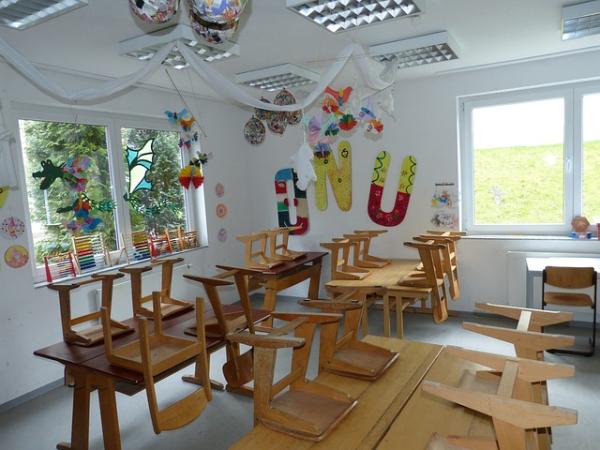They begin with guiding principles,
"COVID-19 is mostly spread by respiratory droplets released when people talk, cough, or sneeze. It is thought that the virus may spread to hands from a contaminated surface and then to the nose or mouth, causing infection. Therefore, personal prevention practices (such as handwashing, staying home when sick) and environmental cleaning and disinfection are important principles that are covered in this document."
Promoting Behaviors that Reduce Spread
- Stay home if you have been diagnosed with COVID-19, are sick or have had "close contact" [1] with a person with COVID-19
- Schools should teach and monitor
- handwashing with soap and water, and if not available, a hand sanitizer.
- covering your mouth with a tissue when you cough or sneeze
- using cloth face coverings, not masks. They recognize the challenge for younger students saying that staff and students should wear "as feasible, and are most essential in times when physical distancing is difficult." They are not to be used when breathing is difficult, or the wearer cannot easily accomplish its removal.
- Provide adequate supplies for healthy hygiene, e.g., soap, hand sanitizer, paper towels
- Post appropriate messaging, PA announcements regarding "everyday protective measures."
Maintaining Healthy Environments
- Clean and disinfect frequently touched surfaces at school and on school buses at least daily or between use as much as possible. The cleaning products should not be used near students, "and staff should ensure that there is adequate ventilation when using these products to prevent children or themselves from inhaling toxic fumes.
- Ensure ventilation systems operate correctly and increase circulation of outdoor air as much as possible. Drinking fountains should be cleaned and sanitized, but encourage staff and students to bring their own water to minimize their use.
- Keep each child's belongings separated from others. Limit the use of shared objects like physical education equipment or art supplies, when possible, cleaned between use. Discourage sharing of items that are difficult to clean or disinfect.
- Avoid sharing of food and utensils by ending buffet dining, encouraging children to "bring their own meals as feasible, or serve individually plated meals in classrooms," using disposal utensils if possible.
- Create distance between children on the school bus and classroom. When feasible space seating and desks, turning desks to face in the same direction.
- Close communal use shared spaces, e.g., dining halls if possible; otherwise, stagger use and clean and disinfect between use.
- When social distancing is difficult, e.g., bathroom sinks, install physical barriers, such as sneeze guards and partitions. Provide physical guides, such as tape on floors
- Create "bubbles" by having the same group of children stay with the same staff (all day for young children, and as much as possible for older children). Pursue virtual events and meetings, limiting group size and the presence of nonessential visitors or volunteers.
- Stagger arrival and drop-off times or locations.
- Offer options for staff and students at higher risk for severe illness that limit their exposure risk through telework, modified job responsibilities, and virtual learning opportunities.
- Use flexible worksites and work hours and sick leave. There should be no penalty for sick employees staying home. Leave should also account for employees acting as caregivers for their children or ill family members.
- Designate a staff person to be responsible for responding to COVID-19 concerns (e.g., school nurse).
- Put systems in place and train staff in
- self-reporting illness, or a positive COVID-19 test or exposure
- notifying staff, families, and the public of school closures or restrictions.
- returning to school after illness
- If feasible, conduct daily temperature and symptom health checks of staff and students.
- Immediately separate staff and children with COVID-19 symptoms (such as fever, cough, or shortness of breath) at school. … Establish procedures for safely transporting anyone who is sick to their home or a healthcare facility. Close off areas used by the ill person and do not use these areas until after cleaning and disinfecting.
Are any of these different from actions being taken by the NBA or your local restaurant? If you were responsible and could be held accountable, are there any of these guidelines you would modify? We spend money on what we deem essential. While we give lip service to the needs of "the children," pediatricians are the lowest-paid members of the medical community. The loss of another year of education would be a national disaster which we will pay for, year after year for a generation. Our parents, who sacrificed much more, are watching.
For those who want to see numbers, The Cost of Opening Schools Safely and State Finance, from econlife.
[1] Defined as being within six feet for more than 15 minutes
Source: CDC website Considerations for schools




